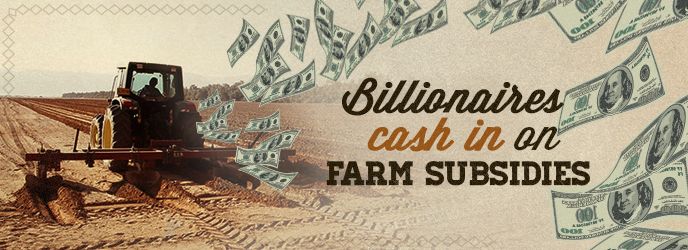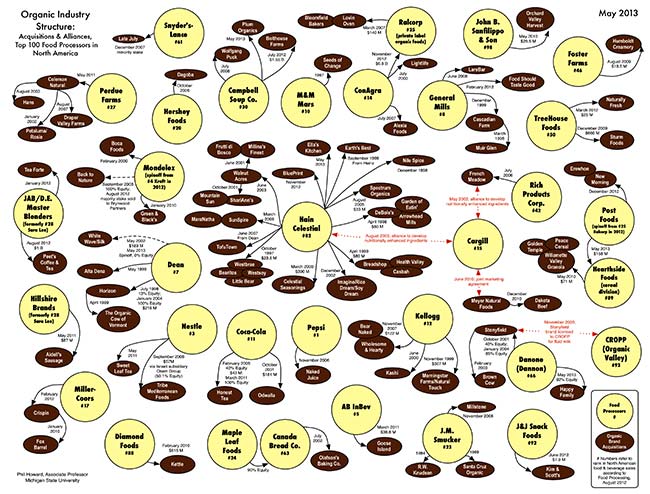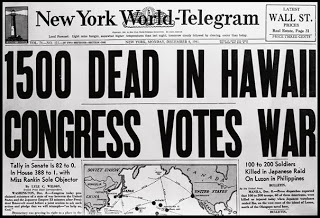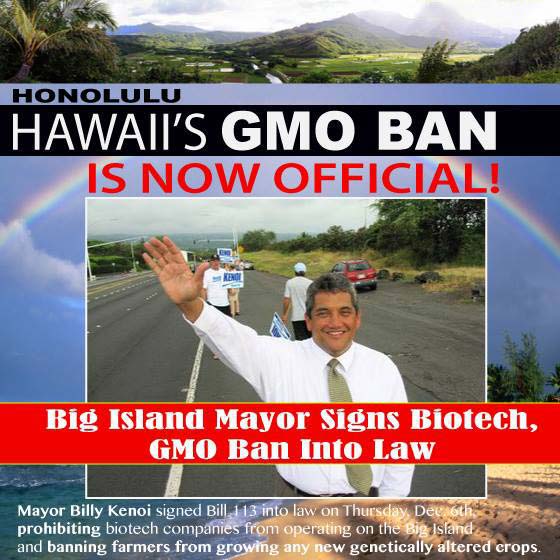Forbes Fat Cats Billionaires Collect Taxpayer-Funded Farm Subsidies (1995 to 2012)

- By Alex Rindler, The Environmental Working Group Policy Associate - Thursday, November 7, 2013
The federal government paid out $11.3 billion in taxpayer-funded farm subsidies to 50 billionaires, or farm businesses in which they had an interest between 1995 to 2012, and changes to the farm bill being weighed by Congress could well increase their take. The billionaires profiting from farm subsidies were identified by matching EWG’s Farm Subsidy Database with the Forbes 400 list of the richest Americans.
The billionaires who received farm subsidies between 1995 through 2012 have a collective net worth of $316 billion, based on the Forbes magazine estimates. They include:
* David Rockefeller, Sr. (Net worth: $20.8 billion) Former chairman and chief executive of Chase Manhattan Bank
* Paul Allen (Net worth: $15.8 billion) Co-founder of Microsoft
* Charles Ergen (Net worth: $12.5 billion) Co-founder of DISH Network
* Philip Anschutz (Net worth: $10.3 billion) Owner of Anschutz Entertainment Group and co-founder of Major League Soccer
* Leonard Lauder (Net worth: $7.6 billion) Son of Estee Lauder and former CEO of the Estee Lauder Companies Inc.
* Jim Kennedy (Net worth: $6.7 billion) Chairman of Cox Enterprises
* S. Truett Cathy(Net worth: $6 billion) Founder of Chick-fil-A
* Leslie Wexner (Net worth: $5.7 billion) CEO of L Brands Inc., which owns Victoria's Secret
* Charles Schwab (Net worth: $5.1 billion) Founder of brokerage firm Charles Schwab Corporation
* Stewart & Lynda Resnick (Net worth: $3.5 billion) Owners of POM Wonderful, Fiji Water and Teleflora
* Penny Pritzker (Net worth: $2.2 billion) U.S. Secretary of Commerce
See the full list of the criminal billionaires who have been receiving farm subsidies below
 Many of these same criminal billionaires may have also receive crop insurance subsidies, but taxpayers have no way of knowing because current law prohibits the disclosure of the identities of crop insurance policyholders.
Many of these same criminal billionaires may have also receive crop insurance subsidies, but taxpayers have no way of knowing because current law prohibits the disclosure of the identities of crop insurance policyholders.
According to the Environmental Working Group's analysis, more than 40 billionaires own properties that grow crops that are among the most likely to be insured through the federal crop insurance program, including corn, soybeans, wheat, cotton and sorghum. From 1995 to 2012, these five crops account for nearly $44 billion in premium subsidies - about 82 percent of total crop insurance subsidies and more than two-thirds of all acres enrolled in the crop insurance program.
A congressional conference committee is currently meeting to come up with a new farm bill, and proposed changes adopted in both the House and Senate versions of the bill will likely allow these billionaires to bank millions more in premium subsidies. Both bills would shift subsidies from programs currently subject to means testing to the more generous crop insurance program. Unlike traditional farm subsidies, crop insurance premium subsidies are not currently subject to means testing, payment limits or conservation requirements.
In 2008, Congress created a means test that was designed to deny some subsidies to individuals with annual off-farm income of more than $500,000. The year before, Bloomberg News published a report highlighting some of the billionaires who had been receiving subsidies. But, lawmakers specifically declined to apply it to crop insurance, which has become the primary government support for farm business income.
The farm bill conference committee is debating whether to include a modest crop insurance means test that would reduce premium subsidies for the largest one percent of farm businesses – a provision that twice passed the Senate and was endorsed last month by a non-binding resolution in the House.
On average, taxpayers cover 62 percent of the cost of crop insurance premiums. In 2011 alone, some 26 policyholders received more than $1 million each in premium support, according to U.S. Department of Agriculture data analyzed by EWG. More than 10,000 policyholders received more than $100,000 each in premium support that year. In 2012, the USDA's Risk Managment Agency reported the crop insurance program cost taxpayers $14.1 billion.
Like other farm subsidies, crop insurance subsidies overwhelmingly flow to the largest and most successful farm businesses. According to data the Environmental Working Group compiled from USDA, the largest one percent of farm businesses received about $227,000 a year in crop insurance premium support in 2011 – while the bottom 80 percent received only about $5,000 apiece.
Forbes Fat Cats Billionaires Collect Taxpayer-Funded Farm Subsidies: Forbes 400 Subsidy Recipients (1995 – 2012)
November 7, 2013
The billionaires profiting from farm subsidies were identified by matching the Environmental Working Group's Farm Subsidy Database with the Forbes 400 list of the richest Americans.
* Paul Allen (Net worth: $15.8 billion, #26 on Forbes 400 Kona Residence Trust, received $144,429 in barley subsidies from 1996 to 2006
* Philip Anschutz, Net worth: $10.3 billion, #38 on Forbes 400 Clm Company, received $553,323 in cotton, wheat, sorghum, corn, oat, barley and other farm subsidies from 1995 to 2003. -- Plus Equus Farms, received $53,191 in livestock subsidies in 2002.
* John Arrillaga, Net worth: $1.8 billion, #314 on Forbes 400 Peery & Arrillaga, received $59,711 in wheat, sorghum, corn, barley, safflower and other farm subsidies from 1995 to 2006
* Lee Bass, Net worth: $2.1 billion, #260 on Forbes 400 Panther City Cattle Company, received $823,129 in cotton, wheat, corn and sorghum subsidies from 2000 to 2007. -- Plus El Coyote Ranch, received $297,950 in wheat, sorghum, corn, soybean, oat and barley subsidies from 1995 to 2002
* Riley Bechtel, Net worth: $3.4 billion, #143 on Forbes 400 Fremont Investors, received $484,283 in rice and other farm subsidies from 1995 to 2003.
* Stephen Bechtel, Jr., Net worth: $3.4 billion, #143 on Forbes 400 Fremont Investors, received $484,283 in rice and other farm subsidies from 1995 to 2003. -- Plus Wild Goose Club, received $947 in farm subsidies from 2006 to 2010
* Eli Broad, Net worth: $6.9 billion, #59 on Forbes 400 Placer Ranch Partners LP, received $56,880 in wheat and rice subsidies from 1995 to 2005
* S. Truett Cathy, Net worth: $6 billion, #68 on Forbes 400 Rock Ranch LLC, received $40,536 in livestock subsidies in 2003
* Gayle Cook, Net worth: $5.2 billion, #85 on Forbes 400 Cedar Farm Harrison County Inc., received $41,141 in soybean, corn and tobacco subsidies from 1998 to 2003
* Richard DeVos, Net worth: $6.8 billion, #60 on Forbes 400 Ada Holdings LLC, received $37,986 in corn, wheat and soybean subsidies from 2001 to 2006
* Charles Ergen, Net worth: $12.5 billion, #32 on Forbes 400 Telluray Ranch, received $117,826 in crop and livestock disaster payments from 2002 to 2008
* Gerald J. Ford, Net worth: $1.9 billion, #296 on Forbes 400 Rio Hondo Land & Cattle Co. Inc., received $222,433 in wool subsidies from 1995 to 2003
* Harold Hamm, Net worth: $12.4 billion, #33 on Forbes 400 $26,785 in wheat subsidies and disaster payments from 1995 to 2002. -- Plus Continental Resources of Illinois, received $318 in disaster payments, corn and soybean subsidies from 2003 to 2004
* Diane Hendricks, Net worth: $4.4 billion, #103 on Forbes 400 H&H Farms of Wisconsin Inc., received $379,933 in corn, soybean, wheat, oat and other farm subsidies from 1998 to 2001
* Ray Lee Hunt, Net worth: $5.6 billion, #74 on Forbes 400 Sharyland Limited Partnership, received $110,270 in cotton, sorghum, sunflower and corn subsidies from 1998 to 2000. -- Plus Hunt Oil Co., received $49,381 in livestock subsidies in 2002
* Paul Tudor Jones, II., Net worth: $3.7 billion, #130 on Forbes 400 Buck Ridge Farms LLC, received $8,260 in crop disaster payments, cotton, soybean, sorghum and corn subsidies from 1998 to 2003 -- Plus Tudor Farms Inc., received $1 in sorghum subsidies in 1996
* George Kaiser, Net worth: $10 billion, #40 on Forbes 400 Kaiser-Francis Oil Company, received $17,518 in wheat, sorghum and barley subsidies from 1996 to 2003
* Jim Kennedy, Net worth: $6.7 billion, #61 on Forbes 400 $37,162 in rice, corn, sorghum, wheat, soybean, sunflower and other farm subsidies from 1996 to 2004. -- Plus York Woods At Yonkapin Cutoff LLC, received $19,545 in rice, sorghum and soybean subsidies from 2002 to 2003
* Henry Kravis, Net worth: $4.7 billion, #95 on Forbes 400 M&T Chico Ranch, received $511,633 in wheat, rice, corn, sorghum, sunflower, safflower, barley and other farm subsidies from 1995 to 2005. -- Plus M&T Staten Ranch, received $502,363 in corn and wheat subsidies from 1996 to 2002
* Ann Walton Kroenke, Net worth: $4.7 billion, #95 on Forbes 400 JL Walton Trust, received $13,273 in corn, wheat, sorghum, soybean and oat subsidies from 1996 to 2002. -- Plus St. Roberts Centers & Farms, received $6,642 in corn, wheat, sorghum and soybean subsidies from 1996 to 2002. -- And $378 in corn and sorghum subsidies in 1995.
* Leonard Lauder, Net worth: $7.6 billion, #56 on Forbes 400 Horizon Organic Dairy Idaho Farm, received $360,102 in wheat, diary, barley, corn and other farm subsidies from 1997 to 2004. -- Plus Horizon Organic Dairy Maryland Farm, received $202,088 in dairy, corn, soybean, wheat and other farm subsidies from 1998 to 2005.
* Nancy Walton Laurie, Net worth: $4 billion, #110 on Forbes 400 JL Walton Trust, received $13,273 in corn, wheat, sorghum, soybean and oat subsidies from 1996 to 2002. -- Plus St. Roberts Centers & Farms, received $6,642 in corn, wheat, sorghum and soybean subsidies from 1996 to 2002.
* Marianne Liebmann, Net worth: $2.6 billion, #209 on Forbes 400 Morse Land Co. Ltd., received $4,282 in livestock, barley, oat, wheat and other farm subsidies from 2000 to 2005.
* Whitney MacMillan, Net worth: $3.8 billion, #122 on Forbes 400 $25,226 in wheat and barley subsidies from 1996 to 1999. -- Plus Wild Eagle Mountain Ranch LLC, received $10,417 in wheat and barley subsidies from 2001 to 2003.
* Neal Patterson, Net worth: $1.5 billion, #352 on Forbes 400 $51,911 in wheat and sorghum subsidies from 1995 to 2001. -- Plus Southpoint Farms LLC, received $66,770 in disaster payments, wheat, sorghum and other farm subsidies from 2002 to 2012.
* Richard Peery, Net worth: $2.1 billion, #260 on Forbes 400 Peery & Arrillaga, received $59,711 in wheat, sorghum, corn, barley, safflower and other farm subsidies from 1995 to 2006.
* Anthony Pritzker, Net worth: $3 billion, #166 on Forbes 400 Chicago Mill & Lumber Co., received $1,604,288 in cotton, soybean, corn, sorghum, wheat, rice, oat and other farm subsidies from 1996 to 2006.
* Daniel Pritzker, Net worth: $1.95 billion, #293 on Forbes 400 Chicago Mill & Lumber Co., received $1,604,288 in cotton, soybean, corn, sorghum, wheat, rice, oat and other farm subsidies from 1996 to 2006.
* Jay Robert Pritzker, Net worth: $3 billion, #166 on Forbes 400 Chicago Mill & Lumber Co., received $1,604,288 in cotton, soybean, corn, sorghum, wheat, rice, oat and other farm subsidies from 1996 to 2006.
* Jean (Gigi) Pritzker, Net worth: $2.1 billion, #260 on Forbes 400 Chicago Mill & Lumber Co., received $1,604,288 in cotton, soybean, corn, sorghum, wheat, rice, oat and other farm subsidies from 1996 to 2006.
* Jennifer Pritzker, Net worth: $1.7 billion, #327 on Forbes 400 Chicago Mill & Lumber Co., received $1,604,288 in cotton, soybean, corn, sorghum, wheat, rice, oat and other farm subsidies from 1996 to 2006.
* John Pritzker, Net worth: $2 billion, #273 on Forbes 400 Chicago Mill & Lumber Co., received $1,604,288 in cotton, soybean, corn, sorghum, wheat, rice, oat and other farm subsidies from 1996 to 2006.
* Karen Pritzker, Net worth: $3.3 billion, #151 on Forbes 400 Chicago Mill & Lumber Co., received $1,604,288 in cotton, soybean, corn, sorghum, wheat, rice, oat and other farm subsidies from 1996 to 2006.
* Linda Pritzker, Net worth: $1.8 billion, #314 on Forbes 400 Chicago Mill & Lumber Co., received $1,604,288 in cotton, soybean, corn, sorghum, wheat, rice, oat and other farm subsidies from 1996 to 2006.
* Nicholas Pritzker, II., Net worth: $1.35 billion, #382 on Forbes 400 Chicago Mill & Lumber Co., received $1,604,288 in cotton, soybean, corn, sorghum, wheat, rice, oat and other farm subsidies from 1996 to 2006.
* Penny Pritzker, Net worth: $2.2 billion, #252 on Forbes 400 Chicago Mill & Lumber Co., received $1,604,288 in cotton, soybean, corn, sorghum, wheat, rice, oat and other farm subsidies from 1996 to 2006.
* Thomas Pritzker, Net worth: $2.7 billion, #201 on Forbes 400 Chicago Mill & Lumber Co., received $1,604,288 in cotton, soybean, corn, sorghum, wheat, rice, oat and other farm subsidies from 1996 to 2006.
* Stewart & Lynda Resnick, Net worth: $3.5 billion, #134 on Forbes 400 Paramount Land Co. LP, received $576,603 in wheat, cotton, corn, sorghum and other farm subsidies from 1995 to 2002.
* David Rockefeller, Sr., Net worth: $20.8 billion, #193 on Forbes 400 $563,715 in corn, soybean, wheat, oat, sorghum and other farm subsidies from 1996 to 2006.
* Robert Rowling, Net worth: $4.9 billion, #93 on Forbes 400 Rowling Ranch Corp., received $157,427 in corn, sorghum and livestock subsidies from 2000 to 2008.
* Fayez Sarofim, Net worth: $2 billion, #273 on Forbes 400 Holly Sugar Corp., received $51,246 in wheat, corn, barley, sugar beet, oat and other farm subsidies from 1995 to 2003. -- Plus FS Ranch Corporation, received $67,125 in livestock subsidies in 2002.
* Charles Schwab, Net worth: $5.1 billion, #88 on Forbes 400 $525,593 in rice and other farm subsidies from 1995 to 2003.
* Walter Scott, Jr., Net worth: $2.2 billion, #252 on Forbes 400 $62,031 in livestock subsidies in 2002. -- Plus Double Eight Land Corp., received $41,101 in livestock subsidies in 2002.
* Harold Simmons, Net worth: $10 billion, #40 on Forbes 400 Dixie Rice Agriculture Corp., received $677,300 in rice, sorghum and other farm subsidies from 1995 to 2003. -- Plus Southwest Louisiana Land Co Inc., received $272,511 in disaster payments, rice, soybean and other farm subsidies from 1995 to 2003. -- And Contran Realty Corp., received $17,754 in rice and other farm subsidies from 1996 to 2003. -- And Contran Corp., received $2,960 in wheat subsidies from 1998 to 2000.
* Warren Stephens, Net worth: $2.5 billion, #222 on Forbes 400 Stephens Group Incorporated, received $146,260 in peanut, wheat, corn, oat, sorghum and other farm subsidies from 1996 to 2003. -- PLUS Greenbriar Lodge LLC, received $86,642 in rice, soybean and wheat subsidies from 2002 to 2008.
* Glen Taylor, Net worth: $1.7 billion, #327 on Forbes 400 Glen A. Taylor Revocable Trust, received $832,970 in corn, soybean, wheat, oat and other farm subsidies from 1995 to 2007.
* Alice Walton, Net worth: $33.5 billion, #8 on Forbes 400 Robson Ranch Inc., received $261,292 in crop disaster payments, wheat, soybean, corn and other farm subsidies from 1995 to 2008.
* Jim Walton, Net worth: $33.8 billion, #7 on Forbes 400 Robson Ranch Inc., received $261,292 in crop disaster payments, wheat, soybean, corn and other farm subsidies from 1995 to 2008.
* S. Robson Walton, Net worth: $33.3 billion, #9 on Forbes 400 Robson Ranch Inc., received $261,292 in crop disaster payments, wheat, soybean, corn and other farm subsidies from 1995 to 2008.
* Leslie Wexner, Net worth: $5.7 billion, #73 on Forbes 400 LAW Plantation Co. LLC, received $209,717 in wheat, corn, sorghum and oat subsidies from 1997 to 2003. -- Plus The New Albany Co., received $5,989 in farm subsidies in 1996.
Who Owns Organic Brands And Why You Should Care?
 Beth Hoffman - Contributor - Forbes - writes about the changing food system.
Beth Hoffman - Contributor - Forbes - writes about the changing food system.
The average American supermarket carries more than 38,718 products. Which means we have tons of choices, right?
Actually much of the yogurt and cereal, jams and chips are owned by very few companies. Even most of the organic brands lining the shelves of your local supermarket or natural foods store are no longer independently owned.
Popular brands, like Boca Burgers (owned by Mondelez, formerly known as Kraft) or Kashi (owned by Kellogg) were actually acquired years ago (both in 2000). Now other seemingly more local or small scale brands like Peet’s Coffee (now owned by JAB) or Coleman Natural (purchased by Perdue) have also recently been bought by large multinational companies in a new round of mergers and acquisitions in the industry.
But the question really is – so what? Why does it matter if Peet’s Coffee is no longer independently owned? Isn’t Brown Cow or Stonyfield yogurt (both now owned by Dannon) the same brand regardless of who owns it?

Frequently the acquisition of an organic brand by a larger company often means the watering down of a company’s standards, says Dr. Philip H Howard of Michigan State University.
“It’s very common that when an organic food brand is acquired, that the new parent corporation reduces its commitment to organic ingredients and seeks out cheaper substitutes,” writes Howard via email. “Examples include Odwalla after it was acquired by Coca-Cola, Silk Soymilk after it was acquired by Dean, and Peace Cereal after it was acquired by Hearthside Foods (now Post Foods). Consumers have to be vigilant about scanning the ingredient lists as a result.”
Checking the fine print on packaging, says Howard, can help consumers assess how many of the ingredients remain organic even after a company take over. Silk Soymilk, for example, began to use conventional soybeans instead of organic after it was taken over by Dean Foods without changing the packaging, although it did remove the “organic” label on cartons. [As is noted in the graphic, Silk more recently spun off to form the independent label White Wave and now offers a Non-GMO certified line of organic products].
Additionally, Howard adds, profits made from organic food purchases may be used in ways consumers would not support.
“One example is the recent vote on labeling genetically engineered foods in California [Proposition 37],” writes Howard. “Transnational corporations with stealth ownership of many organic food brands donated money to stop this effort, which is contrary to the views of the vast majority of all consumers (not just organic consumers).” Coca-cola (owner of Honest Tea and Odwalla), Pepsi-Co (Naked Juice), and General Mills (owner of Lara Bar and Food Should Taste Good) each contributed more than a million dollars to oppose Proposition 37.
To see how the industry has merged and consolidated over time - check out this interactive graphic by Dr. Philip H Howard of Michigan State University
How Many Health Care Pearl Harbors?
Medicare for all for life, single-payer, SiCKO, ACA, Obamacare, health care is a human right
- By Donna Smith - December 7th, 2013
It's a day we all remember in American and world history because of the attack on Pearl Harbor and the immediate escalation of World War II following that day. On December 7, 1941, 2,402 people were killed and 1,282 were injured. The US casualties during World War II exceeded 418,000 people (more than 60 million worldwide). That's a pretty horrific amount of death over the four-five year period of that deadly global conflict.

I cannot help but think of the number of health care casualties we experience in the US every year without pressing for an end to the suffering. We allow 45,000 dead every year due to a lack of coverage or cash that would have allowed them to receive appropriate care; and we allow more than 700,000 to go broke due to medical crisis and debt. That's a death toll and injury toll worthy of a declaration of war, I think.
Just because we don't see the bombs dropped in people's lives all over the country when they get sick or hurt and cannot afford care doesn't mean the injuries and killings aren't happening. Most Americans just aren't seeing the suffering up close enough to be appalled and to take action. It seems to me that one of the challenges those of us who support Medicare for all for life face is in making more people more aware so the casualties of the health care war cannot be ignored.
What did FDR say once about "the only thing we have to fear is fear itself?" well, that's just not true in the US health care system. Fear isn't killing sick and hurt people who don't have money or insurance -- greed is killing them. And until we remove the intense profit motivation within the US health care system, we will continue to see casualties equal to 20 Pearl Harbor attacks every year. And that means we have to be willing to do what is necessary to put an end to these horrible attacks of greed and deliver a single standard of high quality care without financial barrier to all.
I wish we could say that the Affordable Care Act/Obamacare would put an end to this health care death march but it cannot do so because too many people will still be uninsured all together and many more will find themselves inadequately covered by plans that offer lower premiums but still don't cover enough when a serious injury or illness strikes. We must do better, and we must provide health care as a human right to all.
December 7, 2013 -- Today's count of the health care dead and broke for profit in the U.S.:
The 2013, to date, U.S. medical-financial-
industrial -complex system dead: 42,340
The 2013, to date, U.S. health care system bankrupt: 669,610
* These figures are calculated based on the Harvard University studies on excess deaths in the U.S. due to lack of insurance coverage or the ability to pay for needed health care, and the Harvard University study that calculated the high percentage of personal bankruptcies attributable to medical crisis and debt in the U.S. 123 people die daily due to lack of coverage or cash to pay for care; 1,978 go bankrupt every day due to medical crisis and debt though the majority had insurance at the time their illness or injury occurred. This statistic is also based on the 1.2 million bankruptcies in the U.S. in 2012, according to the U.S. Bankruptcy Court, and calculating those medically-related bankruptcies from that number.
Endorse "Health Care as a Human Right" Ballot Initiative
We're gathering support for Colorado's "Health Care as a Human Right" citizen ballot initiative. Please join a large and growing list of other Coloradans -- individuals, groups, and organizations -- in endorsing this amendment to Colorado Bill of Rights.
Shall there be an amendment to the Colorado constitution concerning the provision of one public health insurance program to allow all Colorado residents access to a single standard of health care as a matter of human right and public good, and, in connection therewith, requiring the General Assembly to enact legislation creating a public health insurance plan, requiring the Colorado department of revenue to collect a premium not to exceed 9% of an individual’s income to fund the plan, and prohibiting the control or administration of premiums by a for-profit, nonpublic entity or corporation?
I endorse Ballot Initiative #12, Health Care is a Human Right and Public Good in Colorado.
http://www.healthcareforallcolorado.org/endorse_right_to_health_care
 Donna Smith is best known as one of the documentary subjects of Michael Moore’s 2007 movie, "SiCKO." Her journalism career includes 15 regional awards from the AP Managing Editors. Donna now works as executive director of the Health Care for All Colorado Foundation, and co-chairs the Progressive Democrats of America’s national "Healthcare Not Warfare" campaign.
Donna Smith is best known as one of the documentary subjects of Michael Moore’s 2007 movie, "SiCKO." Her journalism career includes 15 regional awards from the AP Managing Editors. Donna now works as executive director of the Health Care for All Colorado Foundation, and co-chairs the Progressive Democrats of America’s national "Healthcare Not Warfare" campaign.
Hawaii's GMO Ban Is Now Official! Mayor Kenoi Signs Bill 113

Mayor Billy Kenoi signed Bill 113 on December 5, 2013. Below is the message he sent to the Hawai'i County Council
Aloha, Chair Yoshimoto and Members:
On Nov. 19, 2013 the Hawai'i County Council adopted Bill 113 Draft 3 adding a new article relating to Genetically Engineered Crops and Plants, and on Nov. 21, 2013 delivered the bill to me for my consideration. After careful deliberation and discussions with members of my administration and the public, I am signing Bill 113.
Our community has a deep connection and respect for our land, and we all understand we must protect our island and preserve our precious natural resources. We are determined to do what is right for the land because this place is unlike any other in the world. With this new ordinance we are conveying that instead of global agribusiness corporations, we want to encourage and support community-based farming and ranching.
The debate over this bill has at times been divisive and hurtful, and some of our hard-working farmers who produce food for our community have been treated disrespectfully. We are determined to protect every farmer and rancher. Agriculture on Hawai'i Island will continue to grow with county assistance, investment and support. That commitment includes initiatives such as the public-private partnership to improve and expand the Pa'auilo Slaughterhouse to support our grass-fed beef industry, and the launch of the Kapulena Agricultural Park, the largest agricultural park in the state on 1,739 acres of county-owned land. It also includes support for innovative training programs to grow the farmers of the future, and to train veterans to engage in agriculture on Hawaiian Home Lands, and the introduction and advancement of Korean Natural Farming as a sustainable method of producing healthier crops and livestock. It includes completion of the first-in-the-state Food Self-Sufficiency Baseline Study of Hawai'i Island to measure the island's progress toward food self-sufficiency.
We are determined to reunite our farming community to create a stronger and more vibrant agricultural sector. It is time to end the angry rhetoric and reach out to our neighbors. Our farmers are essential to creating a wholesome and sustainable food supply on this island, and they deserve to be treated with respect and aloha. We must turn now to a meaningful, factual dialogue with one another.
With my approval of this bill, our administration will launch a year of research and data collection to investigate factual claims and to seek out new directions that farming in our community should take. This work will include an expanded database detailing the locations of both organic and conventional farms, the crops that are grown, more accurate estimates of the revenue earned from these enterprises, and the challenges our farmers face in meeting food safety and organic certification requirements. We will work with our farmers and our ranchers to carefully monitor the impacts of this bill over the next year to separate speculation and guesswork from the facts.
Today our communities expect that government will be as cautious as possible in protecting our food and water supplies. We all want to minimize impacts to the environment while also producing abundant, affordable food for local consumption. This ordinance expresses the desires and demands of our community for a safe, sustainable agricultural sector that can help feed our people while keeping our precious island productive and healthy.
Aloha,
William P. Kenoi
MAYOR
Download a PDF of Mayor Kenoi's message to the Hawai'i County Council
Source: The Office of Mayor Billy Kenoi


